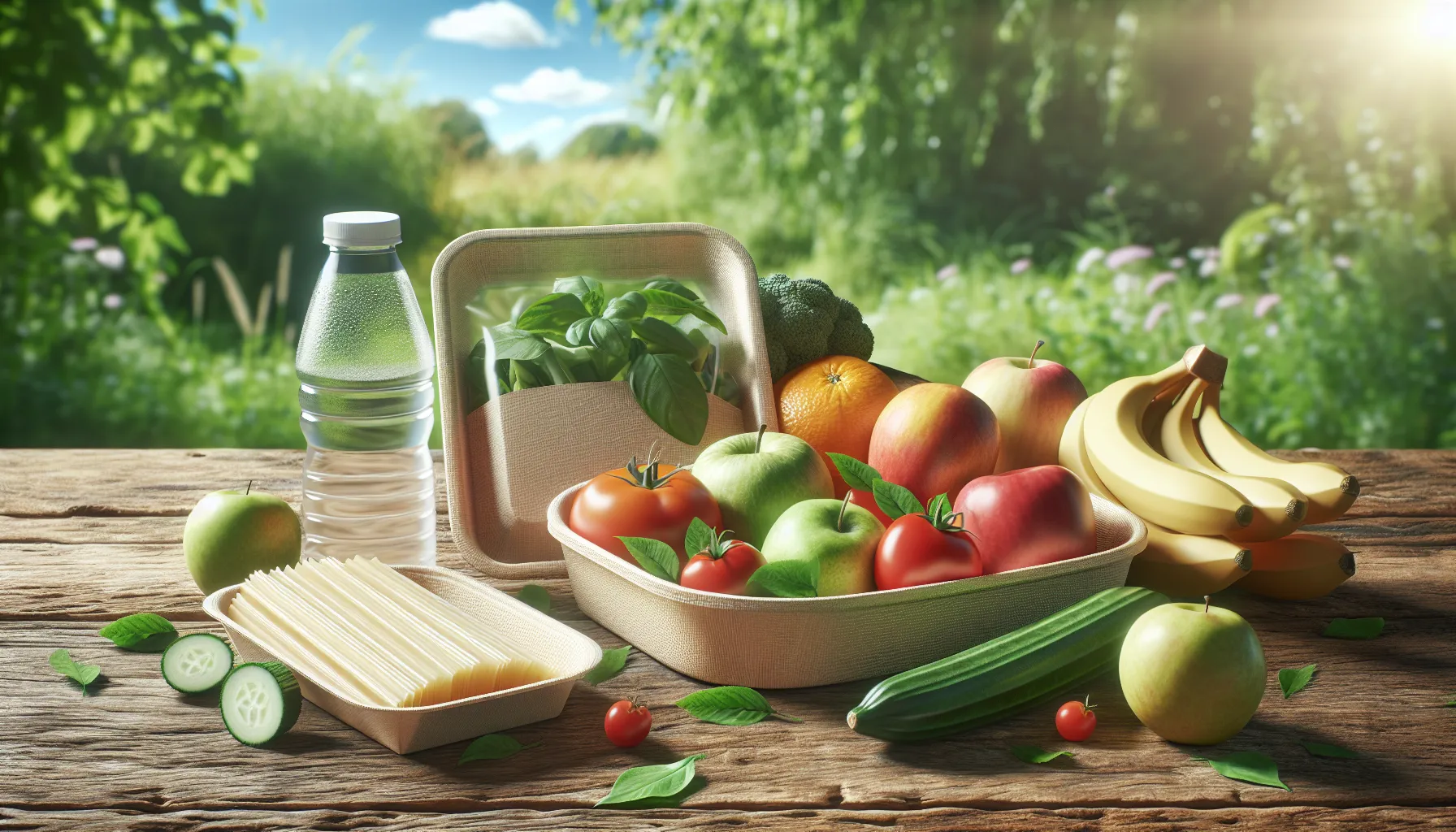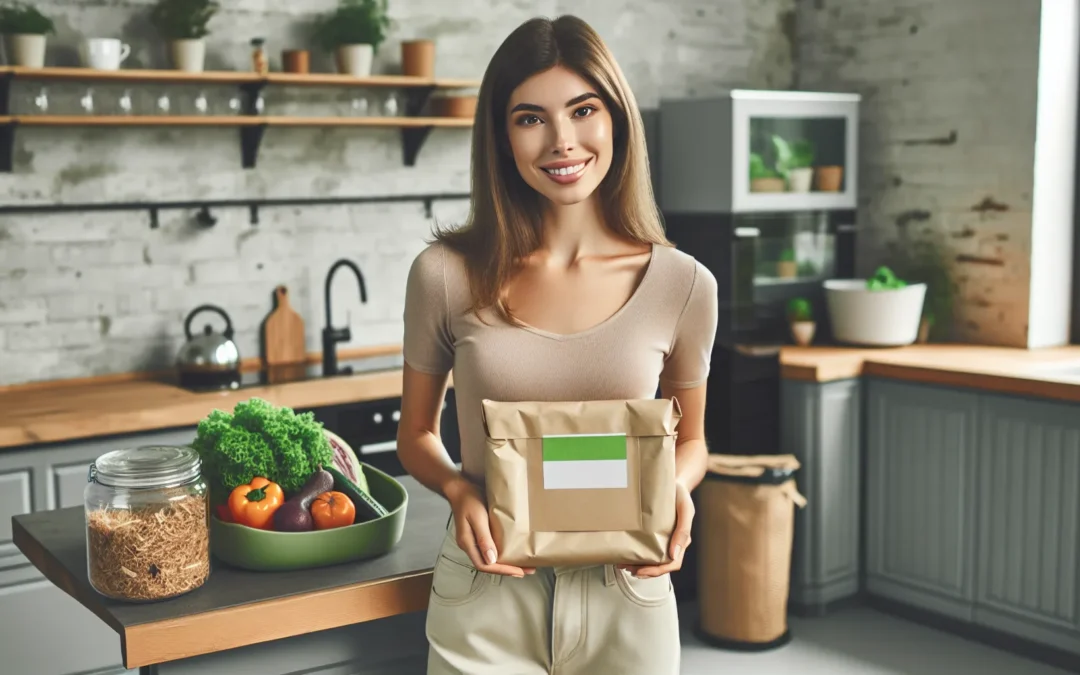Key Takeaways
- Sustainable packaging reduces environmental harm by utilizing biodegradable, recyclable, and compostable materials, cutting down waste and conserving natural resources.
- Eco-friendly packaging resonates with consumers who prioritize brands that align with their environmental values, enhancing customer loyalty and brand image.
- Innovative solutions like edible and smart packaging improve food safety, extend shelf life, and reduce waste while meeting sustainability goals.
- Adoption of sustainable materials supports long-term cost-effectiveness, with lightweight options lowering shipping expenses and compliance with regulations avoiding potential fines.
- Challenges in implementation include technological, regulatory, and market acceptance hurdles, requiring education, collaboration, and informed decision-making to successfully transition.
- Partnering with reliable sustainable packaging providers and educating consumers on eco-friendly practices ensures a seamless shift toward greener alternatives.
When I think about the amount of packaging we toss out daily, it’s hard not to wonder about its impact on the planet. Food packaging, in particular, plays a huge role in our lives, but most of it ends up as waste. That’s where sustainable packaging comes in—it’s not just a trend, it’s a necessity.
Sustainable packaging for food products isn’t just about being eco-friendly; it’s about rethinking how we protect our food while protecting the environment. From biodegradable materials to reusable designs, there are so many exciting innovations making a difference. It’s amazing to see how small changes in packaging can lead to big benefits for the planet.
I’ve always believed that the choices we make as consumers and businesses can shape a better future. Exploring sustainable packaging is one way we can all contribute to a healthier, greener world.
Importance Of Sustainable Packaging For Food Products
Sustainable packaging reduces environmental harm by cutting down non-biodegradable waste. Materials like biodegradable plastics, compostable films, and plant-based alternatives offer eco-friendly options without compromising food safety.
Energy-efficient production processes lower carbon emissions. Producing sustainable packaging often uses renewable resources or recycled materials, reducing reliance on fossil fuels and minimizing the ecological footprint.
Preserving food quality while protecting the planet builds trust with consumers. Eco-conscious customers prioritize brands that align with their values, making sustainable packaging a key factor in purchasing decisions.
Regulatory compliance ensures market success. Many governments implement stricter guidelines for packaging materials, encouraging businesses to adopt greener alternatives and stay competitive in international markets.
Innovations in packaging technology improve functionality and waste reduction. Examples include edible coatings, flexible pouches, and lightweight yet durable containers, all promoting sustainability in food packaging.
Key Materials Used In Sustainable Packaging

Sustainable packaging uses innovative materials to reduce environmental impact while maintaining food safety and quality. These materials focus on biodegradability, recyclability, and compostability to align with eco-friendly practices.
Biodegradable Materials
Biodegradable materials break down naturally into organic components without harming ecosystems. Cornstarch plastics (PLA) and seaweed-based films offer durability and degrade within weeks under appropriate conditions. These materials are ideal for single-use packaging like trays or wrappers because they minimize waste accumulation.
Recycled Packaging Materials
Recycled materials repurpose previously used resources, reducing the demand for virgin raw materials. Recycled paperboard and PET plastic are common examples used in containers, bottles, and cartons. Food-safe variants ensure reliable protection while lowering landfill contributions and energy consumption during manufacturing.
Compostable Alternatives
Compostable materials decompose into nutrient-rich compost when processed in industrial or home composting systems. Sugarcane fiber (bagasse) and mushroom-based packaging provide versatile, eco-friendly options for food products like takeout containers and protective trays. These materials support circular waste systems and enrich soils when disposed of correctly.
Benefits Of Sustainable Packaging For Food Products

Sustainable packaging for food products provides practical advantages for the environment, businesses, and consumers. By prioritizing eco-friendly solutions, it supports long-term goals for a healthier planet and improved industry practices.
Environmental Impact
Using sustainable packaging reduces the environmental harm caused by traditional materials. Compostable or biodegradable options like sugarcane fiber and cornstarch plastics break down naturally, limiting landfill waste and plastic pollution. Recycled alternatives, such as PET plastics and paperboard, decrease the consumption of virgin materials, conserving natural resources. Moreover, energy-efficient production processes lower greenhouse gas emissions and rely more on renewable resources.
Consumer Appeal And Brand Image
Eco-friendly packaging resonates with consumers seeking brands that reflect their values. A study by NielsenIQ shows 73% of global consumers are willing to change consumption habits to lower environmental impact. Featuring sustainable designs and clear eco-labeling builds trust and boosts customer loyalty. This alignment with consumer demands enhances brand reputation and positions businesses as leaders in sustainability.
Cost-Effectiveness Over Time
Although the initial cost of sustainable packaging might be higher, long-term savings outweigh the upfront expense. Lightweight materials like mushroom or seaweed-based packaging reduce shipping costs and carbon footprints. Reuse and recycling programs create cost-efficient circular systems, keeping materials in use longer. Additionally, businesses reduce expenses tied to regulatory fines or reputation loss due to non-compliance with sustainability standards.
Challenges In Implementing Sustainable Packaging

Adopting sustainable packaging for food products involves overcoming several obstacles. These challenges range from technological limitations to regulatory hurdles and customer acceptance, all of which must be addressed to ensure widespread implementation.
Technological Limitations
Developing eco-friendly materials that meet durability and food safety standards poses a significant challenge. Many sustainable alternatives, like biodegradable plastics, lack the same barrier properties as traditional plastics, making them less effective at extending shelf life. For instance, plant-based films may fail to provide adequate moisture resistance, increasing food spoilage risks. Scaling production of these materials is another barrier, as current manufacturing infrastructure often relies on processes optimized for conventional packaging.
Regulatory And Compliance Issues
Sustainable packaging often requires adherence to diverse regulations across regions. Governments frequently revise these guidelines to promote eco-friendly practices, but navigating these changes can be complex. For example, compostability standards differ between countries, creating inconsistencies in product certification. Complying with material labeling requirements, such as proper biodegradability claims, adds further difficulty.
Market Acceptance
Consumer readiness to adopt sustainable packaging varies widely. While eco-conscious customers favor green alternatives, others remain hesitant due to perceived decreases in quality or higher costs. For instance, some might associate paper-based containers with fragility compared to plastic. Businesses must also address misconceptions about sustainable materials by communicating their performance and value effectively.
Innovations In Sustainable Packaging Solutions
Innovative advancements in sustainable packaging are transforming how food products are preserved and consumed. These solutions combine environmental responsibility with cutting-edge functionality to ensure food safety and reduce waste.
Edible Packaging Technologies
Edible packaging represents a breakthrough in reducing packaging waste. Composed of materials like seaweed, rice, or potato starch, these wrappers and coatings are safe for consumption. For example, seaweed-based packaging dissolves in water, offering zero waste after use. Such solutions not only minimize the environmental footprint but also eliminate the need for external disposal, making them ideal for single-serve snacks or food wraps. By using edible films infused with nutrients, brands can even enhance the food’s nutritional value.
Smart Packaging For Food Quality And Safety
Smart packaging integrates technology to monitor food freshness and safety. Indicators that change color based on temperature or gas levels allow consumers to gauge the quality of the product instantly. For instance, freshness sensors in meat packaging detect spoilage by monitoring ammonia levels. Active packaging, another innovative approach, absorbs excess oxygen inside the package, extending shelf life without synthetic preservatives. These intelligent systems reduce food waste by providing real-time feedback and maximizing product usability while maintaining sustainability goals.
How To Transition To Sustainable Packaging For Food Products
Switching to sustainable packaging involves understanding your needs, working with knowledgeable suppliers, and engaging with consumers to create awareness. Each step ensures an environmentally-friendly approach tailored to your business.
Assessing Your Current Packaging Needs
I start by evaluating the materials, costs, and functionality of existing packaging. Identifying which elements are recyclable, reusable, or compostable helps determine areas for improvement. For example, if your products are packaged in traditional plastic, exploring biodegradable films or recycled content alternatives could be a priority. Consider food safety requirements, shelf life, and transportation to ensure optimal packaging performance during the transition.
Partnering With Sustainable Packaging Providers
I collaborate with suppliers specializing in eco-friendly materials to access innovative options like plant-based plastics, mushroom-based containers, or sugarcane fiber. Reliable providers help navigate certifications, ensuring compliance with environmental standards. Engaging with those who offer customizable solutions can address specific packaging requirements while maintaining brand identity. For example, asking suppliers for sample products or case studies demonstrates their ability to meet practical and aesthetic goals.
Educating Consumers On Sustainability
I share clear, concise messaging about the environmental benefits of new packaging to encourage consumer support. Highlighting features like compostability or reduced carbon footprint attracts eco-conscious buyers. Incorporating simple instructions on recycling or disposal directly on packaging builds trust. For instance, I use communication platforms like social media or email campaigns to explain the positive impact of their choices, creating a consistent message across all touchpoints.
Conclusion
Sustainable packaging isn’t just a trend—it’s a meaningful step toward protecting our planet while meeting the needs of today’s eco-conscious consumers. By embracing innovative materials and smarter designs, we can reduce waste, conserve resources, and create a positive impact on the environment.
The journey toward sustainability may come with challenges, but the benefits far outweigh the hurdles. It’s about making thoughtful choices that balance functionality, food safety, and environmental responsibility. Together, businesses and consumers have the power to drive change and shape a greener future for everyone.
Frequently Asked Questions
What is sustainable food packaging?
Sustainable food packaging refers to packaging solutions designed to minimize environmental impact. These include biodegradable, compostable, and recyclable materials that reduce waste, conserve resources, and lower carbon emissions while maintaining food safety and quality.
Why is sustainable packaging important for the environment?
Sustainable packaging reduces landfill waste, minimizes plastic pollution, and decreases reliance on non-renewable resources. It promotes the use of eco-friendly materials and production processes that align with global efforts to combat climate change and protect ecosystems.
What materials are commonly used in sustainable food packaging?
Common materials include biodegradable plastics (e.g., cornstarch-based), compostable options like sugarcane fiber, seaweed-based films, and recyclable materials such as paperboard and PET plastic. These materials ensure reduced waste and promote circular usage systems.
How does sustainable packaging benefit businesses?
Sustainable packaging enhances brand reputation, appeals to eco-conscious consumers, and complies with environmental regulations. While upfront costs can be higher, businesses often save long-term through reduced shipping costs and improved customer loyalty.
What are the challenges of adopting sustainable food packaging?
Challenges include developing durable, food-safe materials, navigating complex regulations, and addressing consumer misconceptions about quality or cost. Businesses must invest in innovation and educate consumers to overcome these barriers.
Are biodegradable and compostable packaging the same?
No. Biodegradable materials naturally break down over time but may leave residues. Compostable materials break down into non-toxic components under specific conditions, enriching the soil without harmful byproducts.
How can edible packaging help reduce waste?
Edible packaging, made from ingredients like seaweed or potato starch, is safe for consumption and eliminates single-use waste. It’s particularly useful for snacks and other single-serve food products.
What are some innovations in sustainable packaging?
Innovations include edible packaging, smart packaging to monitor food freshness, and lightweight containers. These advancements enhance functionality, reduce food waste, and improve packaging sustainability.
How can businesses transition to sustainable packaging?
Businesses can start by assessing their current packaging, identifying recyclable or compostable alternatives, and partnering with eco-friendly suppliers. Educating consumers about the benefits of sustainable options is also vital for adoption.
Do consumers prefer products with sustainable packaging?
Yes, research shows that eco-conscious consumers are more likely to support brands that use sustainable packaging. They value environmental responsibility, making such products more appealing and fostering brand loyalty.

